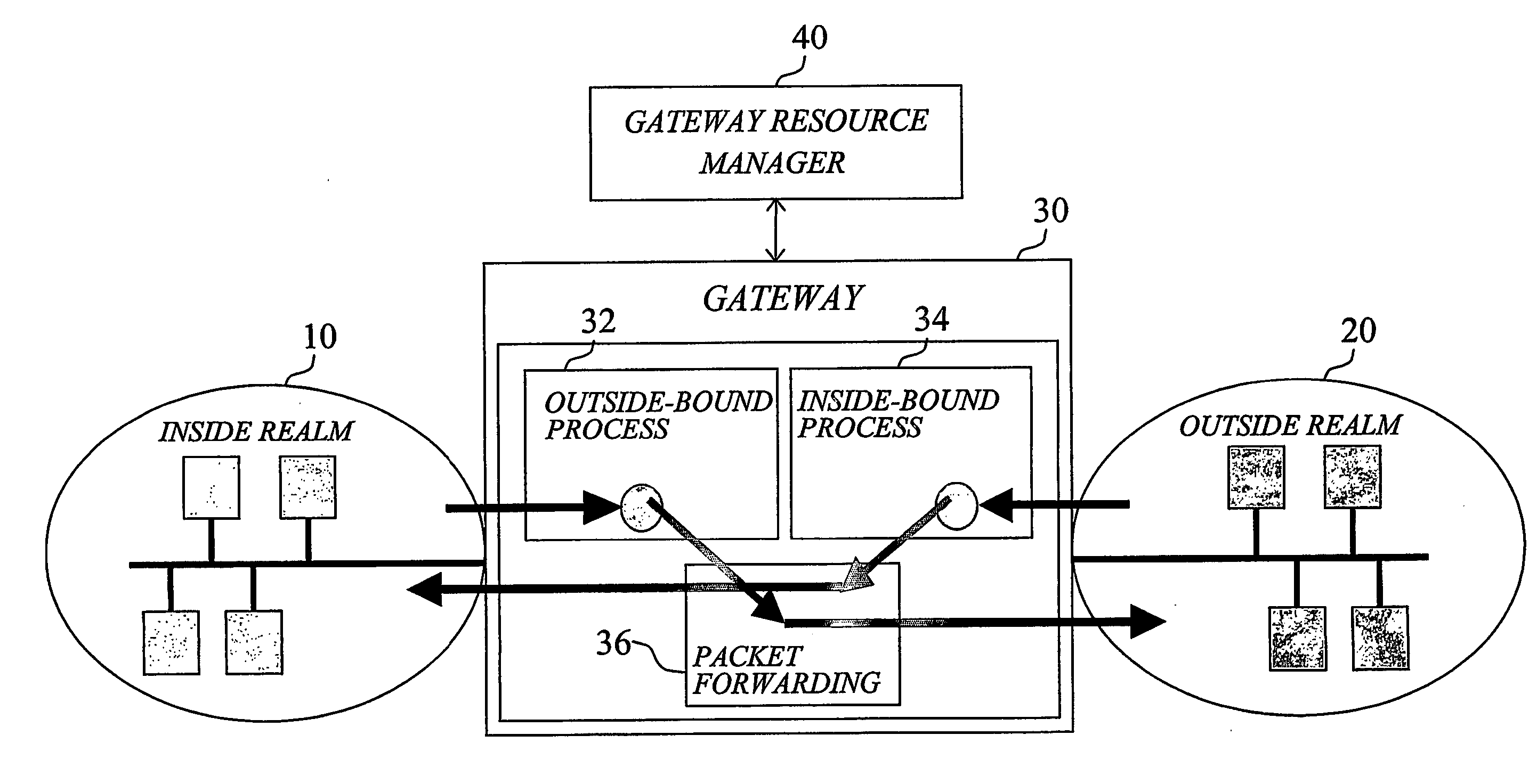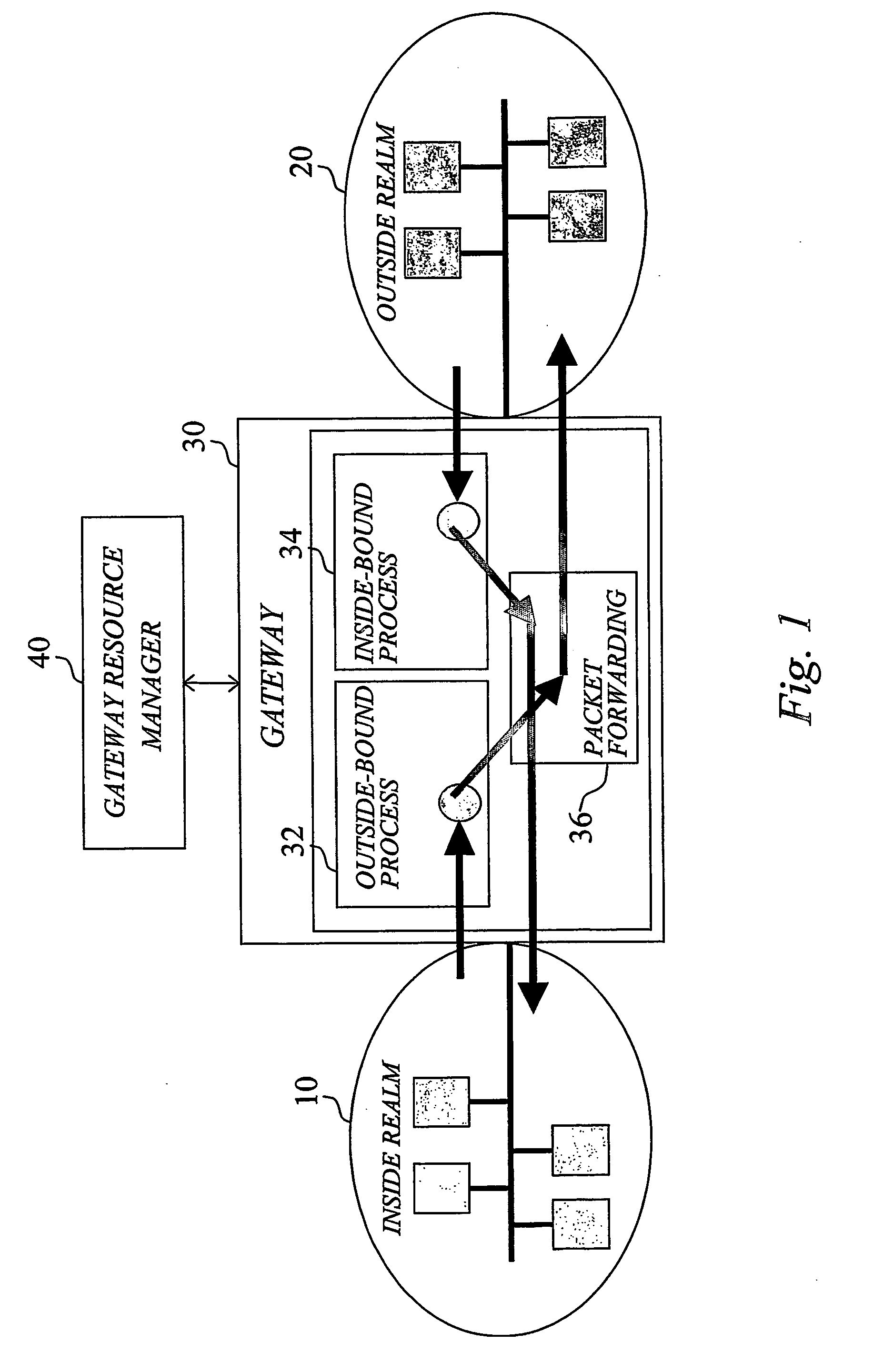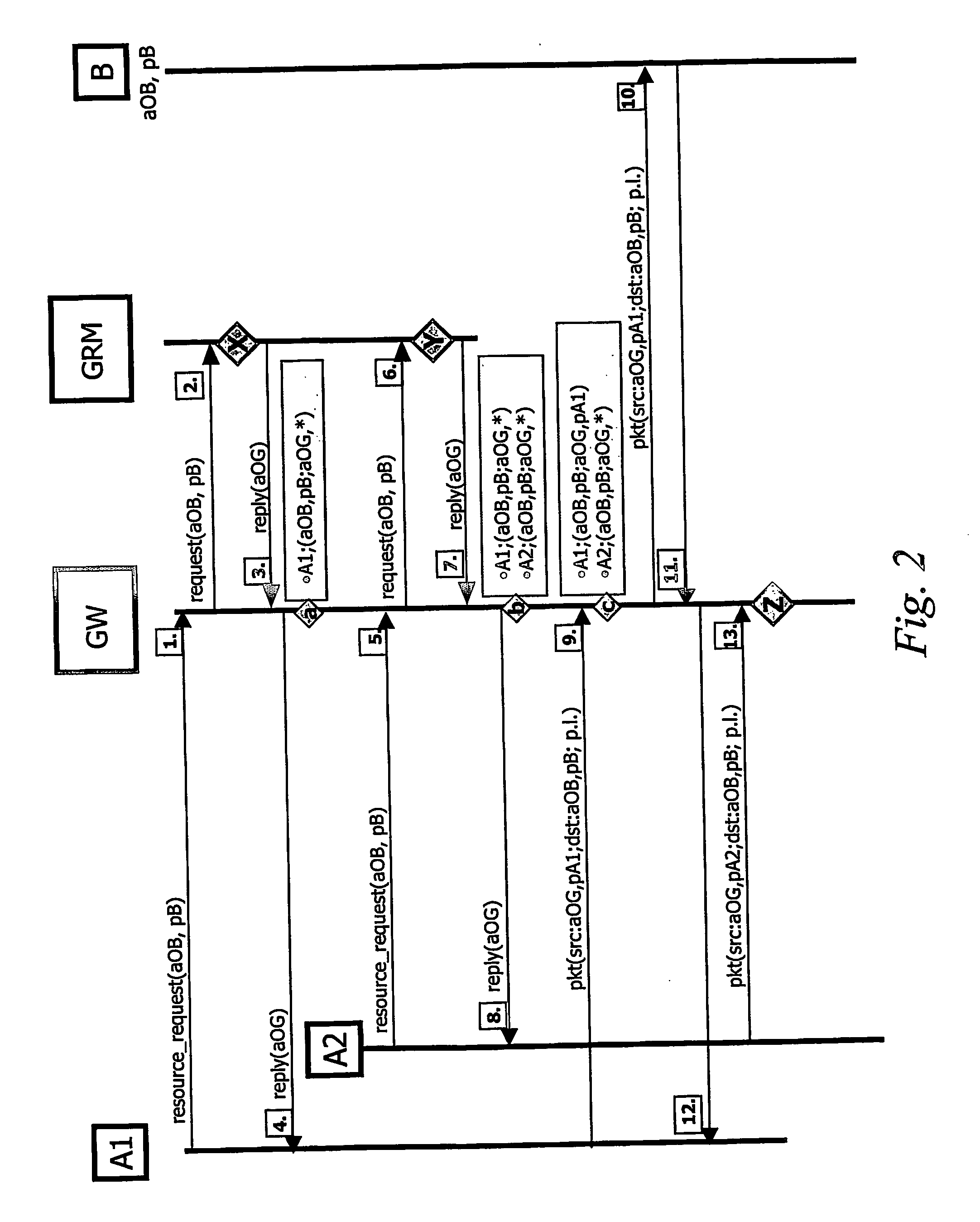Method and system for centrally allocating addresses and port numbers
a central allocation and port number technology, applied in the field of network communication, can solve the problems of limited ip address space offered by the current version of the ip protocol, limited number of ipv4 addresses available to operators, and limited number of ipv4 addresses. achieve the effects of reducing connection blockage, enhancing scalability, and improving connectivity
- Summary
- Abstract
- Description
- Claims
- Application Information
AI Technical Summary
Benefits of technology
Problems solved by technology
Method used
Image
Examples
implementation examples
[0113]FIG. 5 is a schematic block diagram illustrating an example of a system implementation according to a particular embodiment of the invention. The inside-realm node A, such as a communication terminal, is generally arranged for communication with any of a number of outside-realm nodes. The inside-realm node A requests configuration from the central gateway system, and more particularly from the gateway resource manager (GRM) 40. In this example, the configuration request includes a destination node identifier, such as a FQDN, as well as a well-known destination port number. The request is received by the gateway resource manager 40, which sends a query including the destination node identifier to a name-to-address (N / A) translator 50 such as a DNS server. The N / A-translator 50 determines the network address of the destination node B and returns this address information to the gateway resource manager 40. The gateway resource manager 40 now has information on both destination ad...
PUM
 Login to View More
Login to View More Abstract
Description
Claims
Application Information
 Login to View More
Login to View More - R&D
- Intellectual Property
- Life Sciences
- Materials
- Tech Scout
- Unparalleled Data Quality
- Higher Quality Content
- 60% Fewer Hallucinations
Browse by: Latest US Patents, China's latest patents, Technical Efficacy Thesaurus, Application Domain, Technology Topic, Popular Technical Reports.
© 2025 PatSnap. All rights reserved.Legal|Privacy policy|Modern Slavery Act Transparency Statement|Sitemap|About US| Contact US: help@patsnap.com



